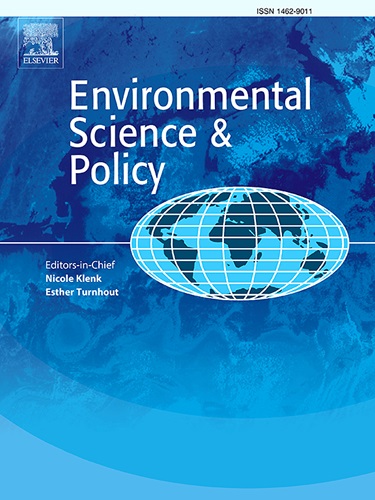When it rains, it pours: Wastewater infrastructure in the face of natural hazards and social vulnerability
IF 5.2
2区 环境科学与生态学
Q1 ENVIRONMENTAL SCIENCES
引用次数: 0
Abstract
Wastewater infrastructure is increasingly vulnerable to climate change and sea-level rise, particularly in coastal regions. Existing research also highlights disparities in access to wastewater infrastructure across different socio-demographic groups. This study investigates the spatial distribution of two distinct yet complementary types of wastewater infrastructure—septic systems and sanitary sewer pump stations—within the context of natural hazards and social vulnerability in Miami-Dade County, Florida, United States. By incorporating the National Risk Index that measures physical risks into our analysis, we demonstrate that a disproportionately high number of wastewater infrastructure per capita are located in census tracts with high natural hazard risks, underscoring the challenges of future infrastructure maintenance. Additionally, using the Social Vulnerability Index that measures social needs, we identify a negative correlation between the number of wastewater infrastructure per capita and social vulnerability, revealing evident social inequities in access to critical wastewater treatment services. We also apply spatial regressions, including spatial lag and error models, to show the presence of spatial dependence. Analyzing the availability of wastewater infrastructure through the lens of natural hazards and social vulnerability provides new insights into inequality assessment. Targeted interventions based on both physical risks and social needs are essential for enhancing urban resilience in the face of climate change.
祸不单行:面对自然灾害和社会脆弱性的废水基础设施
污水处理基础设施越来越容易受到气候变化和海平面上升的影响,特别是在沿海地区。现有研究还强调了不同社会人口群体在获得废水基础设施方面的差异。本研究在美国佛罗里达州迈阿密-戴德县的自然灾害和社会脆弱性背景下,调查了两种不同但互补的污水基础设施类型——化粪池系统和卫生污水泵站的空间分布。通过将衡量物理风险的国家风险指数纳入我们的分析,我们证明,人均废水基础设施位于自然灾害风险高的人口普查区的比例过高,这突显了未来基础设施维护的挑战。此外,利用衡量社会需求的社会脆弱性指数,我们发现人均废水基础设施数量与社会脆弱性之间存在负相关关系,揭示了在获得关键废水处理服务方面存在明显的社会不平等。我们还应用空间回归,包括空间滞后和误差模型,以显示空间依赖性的存在。从自然灾害和社会脆弱性的角度分析废水基础设施的可用性,为不平等评估提供了新的见解。基于自然风险和社会需求的有针对性的干预措施对于增强城市抵御气候变化的能力至关重要。
本文章由计算机程序翻译,如有差异,请以英文原文为准。
求助全文
约1分钟内获得全文
求助全文
来源期刊

Environmental Science & Policy
环境科学-环境科学
CiteScore
10.90
自引率
8.30%
发文量
332
审稿时长
68 days
期刊介绍:
Environmental Science & Policy promotes communication among government, business and industry, academia, and non-governmental organisations who are instrumental in the solution of environmental problems. It also seeks to advance interdisciplinary research of policy relevance on environmental issues such as climate change, biodiversity, environmental pollution and wastes, renewable and non-renewable natural resources, sustainability, and the interactions among these issues. The journal emphasises the linkages between these environmental issues and social and economic issues such as production, transport, consumption, growth, demographic changes, well-being, and health. However, the subject coverage will not be restricted to these issues and the introduction of new dimensions will be encouraged.
 求助内容:
求助内容: 应助结果提醒方式:
应助结果提醒方式:


